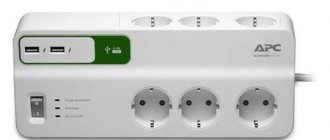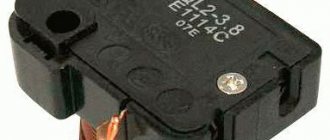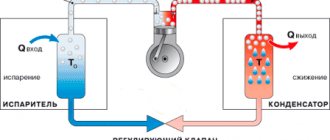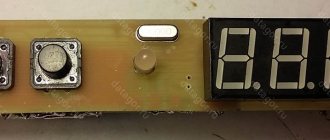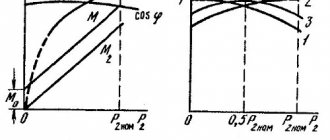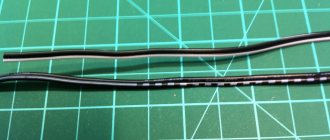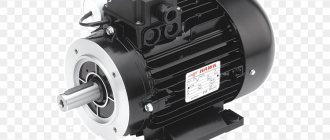Has it ever happened to you that when you touch the metal parts of the case, the refrigerator gets an electric shock? Even if the discharge is insignificant and does not create significant discomfort, this kind of problem should be corrected as soon as possible, since it can be a symptom of serious damage. In addition, electric shocks themselves are dangerous, especially for small children and pets.
As soon as you first encounter sudden electric shocks when in contact with the unit, we strongly recommend that you call a specialist to carry out diagnostics by phone or online. At the service center you will be provided with qualified assistance in repairing refrigerators manufactured under the brands Indesit, Daewoo, Samsung, Liebherr, Sharp, LG, Ariston, Bosch and many others. Trust our experience: we have been successfully servicing household appliances for more than ten years and have acquired many regular customers during this time. We work from 7:00 to 23:00 without weekends and holidays.
Causes of problems
Current flowing through the body is not normal. The shock may be quite strong if you touch it with a wet palm or accidentally grab the battery with your other hand. Electric shocks are also observed when the refrigerator is installed on a cement base. What is the reason for this phenomenon?
- An old electrical outlet is not equipped with a ground connection or does not make tight contact with the plug.
- Destruction of the insulating layer of residential electrical wiring.
- Damage to the insulation of the power cord wires, wiring inside the compressor or other modules.
- Icing or thermostat malfunction.
The first two reasons are not directly related to the technical condition of the device; in this case, the device operates without grounding and you will need to call an electrician. In other situations, the breakdown is caused by current leaks into the housing due to damaged insulation of the refrigerator itself. Insulation failure can occur at the production stage of the device, during transportation or directly during operation due to moisture and temperature changes or mechanical stress.
The cause of current leaks may be the thermostat. An electrical insulating gasket is installed between its mechanical part and the electrical circuits. Over time, it wears out and holes appear in the body.
From a technical point of view, it is most difficult to repair a compressor if current leaks are caused by a breakdown of the winding. Replacing a damaged section of wiring does not always solve the problem, or repair work will be too expensive. In such cases, a complete replacement of the unit will be required. A similar decision is made for other conductive parts - installing a working module guarantees that the problem will not appear again after some time. It is important that the components being replaced are fully compatible with the device and certified by the refrigerator manufacturer.
Reasons for this behavior of technology
Actually, in household refrigeration units, all electrics can be connected to a separate structural system (circuit). Sometimes it malfunctions and when you touch the unit, you feel a slight tingling sensation. Normally, there is a voltage of 30-40 V on the device body - this is the lower limit of sensitivity of a dry hand . But, if there is a problem and immediately measure the readings with a voltmeter, you can see all 110 V AC. As you can see, this is a good half of the mains voltage of 220 V. So the question arises, where did these 110 V come from when the norm is 36?
More specifically, capacitors are most often to blame. They are connected to each other, to the body of the device , plus this point is brought out beyond the ground of the plug. A divider is formed in the chain, in which the mains voltage is divided in half - 110 V goes to the body. This is not fatal, but it can cause injury, especially for children.
The malfunction may be caused by other reasons:
- failure of electrical parts;
- damage to the wiring insulation, which causes current leakage to the housing. It is rare that the insulating layer of the compressor is damaged or the temperature controller is covered with ice, which also causes breakdowns. In the latter case, you should defrost it and let it dry.
How to properly connect a refrigerator to an electrical outlet
All equipment, both European and domestic, is subject to such breakdowns. Although, the same Atlas receives electric shocks twice as often as Bosch or Zanussi .
Diagnosis of current leaks
With basic knowledge of electrical engineering, you can determine the source of current leakage into the housing. To do this, you will need a multimeter with a megohmmeter function. The diagnostic procedure consists of the following steps:
- the device is disconnected from the power supply;
- A visual inspection of the electrical wiring insulation is carried out. You need to make sure there are no exposed wires;
- the thermostat is set to an arbitrary operating position;
- the “Ground” megohmmeter lead is tightly attached to the body; at the point of contact, a small area should be cleared of paint and the contact should be fixed;
- the “Line” pin is connected to the pins of the plug;
- to find the location of the leak, the wires and functional units (thermostat, relay) are sequentially disconnected until the resistance level is restored to an acceptable value.
But any manipulation with electricity is dangerous. If you do not have sufficient experience, call a specialist who will carry out the diagnosis himself.
Repair: what can break?
The refrigerator is electrocuted - what to do in this case? The first step is to disconnect the unit from the mains voltage. There are many companies that can provide first aid with repairs. Specialized companies have their own diagnostic equipment. Using a multimeter, you can check the insulation condition of the wire from the device to the plug. The multimeter can also show the state of the grounding in the socket, and in which area inside the refrigerator there was a breakdown of current to the housing.
Multimeter
Most often they break:
- power plug for the device;
- cable from the unit;
- wire coming from the compressor;
- thermostat design.
The technician who needs to be called must deal with the breakdown of the unit quickly. Please note that a failed part must be replaced with a part from the same company or with similar characteristics.
Refrigerator repair
Grounding check
Since the refrigerator was originally designed in such a way as to make any current leakage impossible, voltage on the body often occurs due to insufficient external grounding. To check the grounding loop, a multimeter is also used, which places a wire with a phase in the electrical outlet, after which it is determined in resistance measurement mode whether the power is grounded. In addition, a phase on the housing may appear due to unreliable grounding contact between the electrical outlet and the plug from the refrigerator power cord.
We diagnose the breakdown ourselves
Every owner of a refrigeration device wants to immediately understand why the refrigerator is electrocuted.
To do this you need to make your own diagnostics:
- First, disconnect the device from the network;
- carefully inspect the wire for insulation damage;
- We carry out a visual search for defects;
- We inspect the thermostat device.
If you have a megohmmeter, you can use it to locate the breakdown location. This is done as follows: the “ground” of the device is connected to the ground of the refrigeration unit, the “line” to the wire or section of the electrical circuit being tested. Often the cause of electrical breakdown on the housing is a malfunction of the compressor, so only a technician from the service center can determine the specific cause.
Contacting "Remontano"
Troubleshooting is a rather non-trivial task if you have no experience working with electrical equipment. Contacting a service center allows you to avoid breakdowns caused by unqualified maintenance. The specialists of the Repair Center know how to fix problems of any complexity in the shortest possible time. With us, you will be absolutely sure that your household appliances will work flawlessly, and you will not encounter any unpleasant surprises during its operation. All types of services are guaranteed. We have our own spare parts warehouse. We work from 7:00 to 23:00. You can call a specialist at your home by calling the number or filling out the feedback form on the website.
Why is there a slight electric shock from the body of a refrigerator, washing machine, or computer?
Many people have felt a tingling sensation from touching the metal parts of household appliances, be it a refrigerator, washing machine or computer. The nature of this phenomenon is electrical, which is easy to verify by disconnecting the device from the network. There is voltage on the body of the device plugged into the outlet and it is clearly at least 30-40 volts - the lower limit of sensitivity of non-wet skin of the hand. Well, anyone who had the opportunity to measure this voltage with a voltmeter will say more precisely - there are as many as 110 volts of alternating current on the case, which is exactly half of the mains voltage of 220 V. This raises an important question: where and why do these 110 come from when the norm is acceptable for health? 36?
The answer sounds like this: somewhere inside the device, between the two wires coming from the plug, two capacitors are connected in series, one after the other. And the point at which the capacitors are connected to each other is connected to the body of the device, if it (the body) is metal. And this point is also output to the grounding contact of the plug, unless, of course, the device is completely old and the plug is made according to the European standard. In the diagram it looks like this:
In general, this circuit is designed to suppress interference, but this is not important to us now.
What is important to us is that two capacitors of the same capacity form a divider, a chain in the middle of which the 220V mains voltage is divided in half. That's where these 110V come from.
Here it must be said that although this hundred or ten is frightening to the ear, you still shouldn’t be mortally afraid of it. The fact is that there is also such a concept - current strength. So, if we consider the above-designated divider as a current source, then it turns out to be rather weak. It may be able to handle a dozen milliamps, but it won’t handle the hundred required for murder. But it can cause injury, because the body begins to feel currents starting from fractions of a milliampere, especially for children. Now the question is: how to deal with this?
In theory, everything was planned in such a way that there would be no need to fight at all. There is a grounding contact on the plug through which this voltage should be extinguished to zero.
And if this does not happen, then this is the problem of those who turn it on incorrectly. And indeed, how often do we check the serviceability of the grounding loop, and the very fact of its presence?
How to check the ground loop.
Method 1. To do this you will need a cord with a Euro plug and a socket with a light bulb. There are three wires in the cord. We cut the end of the cord, strip the yellow-green ground wire and one of the other two wires from the insulation. We don’t use the third wire - we shorten it and insulate it. We connect two stripped wires to the socket. You should take a light bulb with a power of at least 40 W (220V). Insert the plug into the socket being tested. Is the light not on? Then he takes out the plug, turns it half a turn and inserts it again. If the light bulb does not light up in any case, then this indicates that there is no smell of any grounding in this outlet. If the light bulb burns dimly, then it only smells like grounding, but nothing more. If properly grounded, the light bulb should burn brightly.
The disadvantage of this method is that if the electrical panel of your apartment is equipped with an RCD, then during the experiment the RCD will trip and turn off the light in the apartment. So in this case, you will have to block the RCD for the duration of the test, but this requires caution and skill in working with electricians.
Method 2: You will need a multimeter and an idea of how to use it. An RCD won't hurt.
Set the multimeter to AC voltage measurement mode. We hold one probe on the grounding contact of the socket, and alternately poke the other probe into the right and left holes. In some cases, the device should show 220V (+/-10%), and in some cases 0 volts. If this is not observed or the numbers fluctuate greatly, then there is no point in checking further - the test result is negative.
We switch the multimeter to resistance measurement mode. We still keep one probe on the grounding contact of the socket. We insert another probe where the device showed 0V. Don't mix it up, otherwise the multimeter will be destroyed! The resistance should be no more than 4 ohms. If so, then everything is OK. But even at 10 ohms, the outlet can be considered grounded - at least it won’t be pinched.
If there is a grounding, but the refrigerator/washing machine/computer still continues to bite, then the reason most likely lies in the absence of a grounding contact between the plug and the socket. In low-quality sockets, the grounding prongs often bend inward and do not wrap around the plug. So this is probably where you should start checking!
PS
Unfortunately, not all houses and apartments have wiring with a grounding wire. Old sockets, into which the plugs of many modern household electrical appliances “do not fit,” have long been replaced with new ones, the grounding terminals of which simply have nothing to connect to. What are the options here? Yes, essentially none. We do not consider grounding options through a water supply or neutral, since they are unsafe: in the first case for plumbers, in the second for the residents themselves. All that remains is to write collective letters to the power grid.
Why does it give a slight electric shock - it tingles from the body of the refrigerator, washing machine, computer.
Refrigerator diagnostics
To determine the cause of a breakdown on the housing, you will need a multimeter (it’s good if it has a megohmmeter function), a screwdriver probe (phase or zero detector), and pliers.
The tester checks the presence of voltage on the housing. If the probe shows voltage, the refrigerator is disconnected from the network and troubleshooting is carried out.
Device diagnostics are carried out in the following sequence:
- Before starting work, check the condition of the power cable. There should be no visible defects, cracks or exposed conductors on the wires. If it is damaged as shown in the picture, it should be replaced.
- If there is no visible damage, a rubber gasket is placed at the point of contact of the wire with metal parts. Thus, voltage breakdown on the housing is eliminated.
- If this does not help, you should turn the fork 180°. what comes out of this is clearly shown in the video. However, you should not be complacent if the malfunction disappears; the defect may appear in the near future.
A specialist should know how to check the serviceability of a refrigerator with a multimeter. The main causes of the malfunction may be:
- Breakdown of the electric motor winding. This could be an interturn short circuit or an insulation breakdown on the housing. The test is carried out using a multimeter, measuring the resistance of the windings with the housing. It is impossible to check the interturn closure with this device. You can only determine the break. Before taking measurements, the contacts should be cleaned from corrosion. The resistance between the housing and the winding contact must be at least 0.5-1 MOhm. It depends on the type of engine. If the resistance is less, then we can conclude that the insulation is faulty.
- Thermostat malfunction. These include gasket failure and ice accumulation on the device. To check, turn off and defrost the refrigerator. After defrosting, let the device dry for at least 12 hours and check the components. If the thermostat is faulty, it is replaced with a similar one. The use of another type is unacceptable.
- If one of the high-pass filter capacitors fails, 110 volts will be present on the housing.
- The causes of the malfunction may also lie in other electronic components.
Therefore, it is better to entrust the search for a faulty unit to a qualified specialist. The figure below shows the compressor motor and its contacts.
Our advantages
The service center offers clients professional troubleshooting of refrigerators of any complexity. We have been working in the market for a long time and have proven ourselves on the positive side. The main advantages of cooperation are:
- Loyal prices for repairs of any complexity. A specialist’s visit to your address is provided free of charge.
- Repair services are carried out at the customer’s home. There is no need to take the equipment to the workshop.
- The technician has the necessary tools and components to restore serviceability during one visit.
- We work with well-known brands, including Indesit, Daewoo, Sharp, LG, Ariston.
- We issue an official warranty card and provide a receipt of payment.
You can clarify the details of cooperation and order a visit from a specialist by calling +7 (812) 324-97-77 or through the website. Urgent repairs are carried out if an application is submitted before 12:00 of the current day. In other cases, you can choose a time that is convenient for you.
Grounding the washing machine
Unfortunately, grounding a washing machine is only possible if a common ground bus is installed in the house or apartment. Some users solve the problem by simply connecting the neutral wire to the housing, but this does not make the operation of the household appliance any less dangerous.
There is another solution to the problem - grounding the washing machine itself, without connecting it to a common bus. The sequence of this action is as follows:
- Purchase a wire that is long enough from the washing machine to a place outside the house or apartment where you can drive a metal corner into the ground. The wire should have lugs on both sides that can be crimped using a hydraulic press.
- On the street, next to your house or apartment, hammer in a metal corner at least 1.5 meters long. It should be driven in until the top of the product is level with the ground. Drill a hole in the upper part, the diameter of which should be equal to the tip located at both ends of the wire.
- Using a bolt, screw one part of the wire to the corner driven into the ground. The second end of the wire should be led to the washing machine and secured to the body.
For a better understanding of the issue, you can read the article protective grounding.
There is no need to drill the body of the washing machine. Manufacturers usually provide for the possibility of having a grounding bus in the house, and make a bolt from the inside of the device onto which the tip is placed.
Now, even if excess electric current reaches the body of the washing machine, then through the mounted wire, all the potential will go into the ground.
